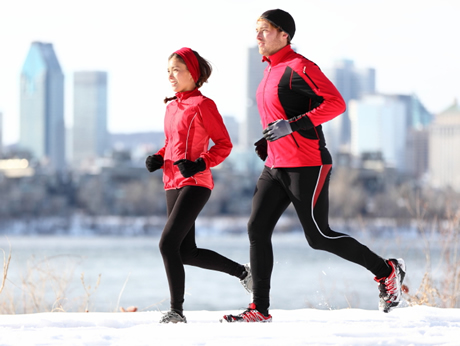Jogging and running can put impact and strain on your joints. Particularly, if you’re practicing improper form while engaging in either activity. Signs you may not be practicing the proper form include pain the knees, back or hips after running. Or soreness in the heel. By taking the steps to correct your form, you may find yourself jog/run faster. With less pain.
Common Mistakes
Runners make common form mistakes that can lead to an increased pain and injury. Some of the most common mistakes including
- failure to use your arms to propel you forward
- taking strides that are too large,
- putting too much bounce into your run
- landing too hard on your feet
Other common mistakes include jogging at a slower pace than when walking. Or, excessively twisting from side to side. Try to observe yourself running in a mirror, if possible. If you observe these mistakes, take steps to correct them.

Breathing
Breathe through your mouth. Allow your diaphragm to lift and retract for deep belly breathing. The benefit of diaphragmatic breathing is that when you exhale, your abs contract. Which means you give your midsection a little isometric workout. If your concern is erratic breathing, you may want to practice breathing patterns. Inhale as you take two steps. Exhale for the next two. You may be able to stretch the inhalation and exhalation. It depends on your lung capacity.
Foot strikes
How your foot strikes the ground when jogging or running can affect the proper running form. You should start by concentrating on how your foot lands. The ball of your foot should hit the ground, while the toes are pointing slightly downward. Yes, not parallel to the ground. The foot should land lightly and then start to move backward, toward your heel. Imagine that your foot is gently scraping the surface, instead of firmly planting on it. Your heel shouldn’t fully touch the ground. If it does, maybe you’re running too slowly. Just imagine that your legs are on an imaginary cycle, like an elliptical machine. And keep the rhythm.
Legs, hips, and back
Your legs and hips, particularly your quadriceps, help propel you forward. Indeed. You shouldn’t experience a lot of side to side waist or hip movement. This will prevent you from twisting your back. Keep your back straight and relaxed. You may naturally lean forward slightly. To avoid lower back pain, don’t hinge forward too far at the waist.
Arms, Chest, Head, and Shoulders
The final parts of the proper running form are your arms, chest, head, and shoulders. Keep your back relaxed. This will relax the shoulders as well. Bend your arms at your elbows and move them comfortably from the shoulders. You can hold your palms in. If you prefer, you can make a fist. Just don’t make it too tight. Why? Because it will affect your breathing. Your head should rest over your neck. And, your eyes looking forward, not on the ground






















